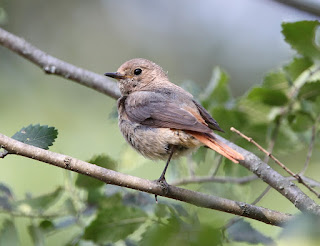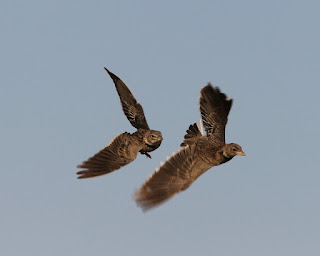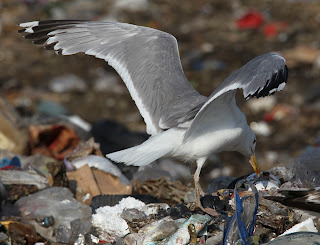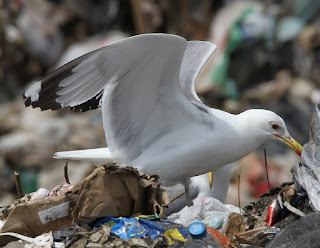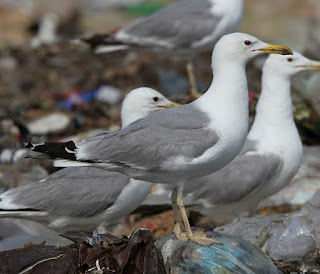Sunday 4 November 2012
Isabelline Wheatear: odd pose/behaviour
Just been sorting out images for a talk that I'm giving and was reminded of this bird that I saw a few years ago. A great bird, but I have always wondered about the wings-open pose: has anyone come across this behaviour before in this species?
Sunday 30 September 2012
Some interesting and some spectacular birds from Azerbaijan
These images are all from a trip to Azerbaijan in June/July 2012. From a birding perspective, Azerbaijan is an incredibly interesting country, because of a mixture of some spectacular birds and a number of eastern taxa that occur (or potentially occur) in Britain as vagrants. Pictured above is a Blue-cheeked Bee-eater - one of the spectacular birds.
Adult and juvenile Snow Finch
Juvenile Snow Finch
Adult Snow Finch
Eastern Nightingale golzii
An interesting (grey-headed) female red-backed Shrike
An intersting male Red-backed Shrike - note the white in the base of the primaries
Juvenile samamisicus Redstart
An adult female. Adult birds were very worn during the visit in June/July.
And and adult male - the silvery wing panel is very evident on this individual.
White Wagtail. The taxon that occurs in Azerbaijan has extensively white greater coverts
Lesser Kestrel
Lesser Kestrel
Blue-checked Bee-eaters
Rufous Bush Robin
A male samamisicus - note the reduced wing panel on this individual, related to wear
Calandra Larks
Calandra Lark
Rock Bunting
Rock Thrush (male)
Rock Thrish (Juv)
Shore Lark
Common Rosefinch
Rose-coloured Starlings
An adult
A juvenile
Wednesday 1 August 2012
Adult eastern Caspian Gulls from Azerbaijan
A classic Caspian Gull pattern, similar/identical to many western ponticus
Note the length, shape and colour of the P10 tongue, compared to others highlighted below (and relative to the ponticus birds we see in Europe)
Slightly longer tongue than the bird highlighted above, but similar smooth shape
Note serrated and almost diffuse edge to p10 tongue
A different, jagged-edged tongue.
An intermediate/short tongue, with the length of the white tip shorter than the length of the black band. Tongue distincly grey, rather than pure white.
Very bright bare parts and a rather pale eye.P10 typical Caspian.
Scary short P10 tongue
Above are a couple of birds with extensive black across the tip of P10 .
A bird with a thayeri pattern on P9 and 10. That such birds exist in the east is notable.
The same individual is shown in the above 2 images
Rather a lot of black in the wingtip - note extensive black in tip of P10, small P9 mirror and black to P4.
A close up of a bird with only one or two speckles in the eye. In most field views this would look pale eyed.
thayeri patterns
Rather robust bill and short P10 tongue
Limted inward extension of black in the primaries.
Now for some examples of more problematic birds. This bird has rather a lot of black in the outer two primaries, and looked a fraction darker grey in the field. Steppe Gull (barabensis) should not be in Azerbaijan in summer; to my eye (in field views) it was not dark enough for barabensis but tricky to judge this in the bright, sunny conditions. Of course much remains to be determined and it may be that barabensis is breeding in this area; we had a few 2 cy birds that appeared to be this taxon..
Same bird is shown above and below. Rather bright bare parts and a pale eye, and a distinctly grey P10 tongue. Ive seen michahellis in Romania like this (e.g. the final image below). We had another bird that was even more like Yellow-legged Gull; this bird will be featured elsewhere so I've not posted it here.
Yellow-legged Gull, Mamaia, Romani (January) This primary pattern is very like some birds seen in Azerbaijan. Food for thought.
Subscribe to:
Posts (Atom)











